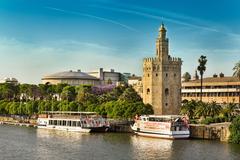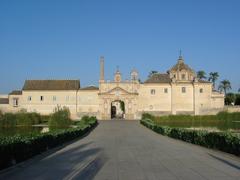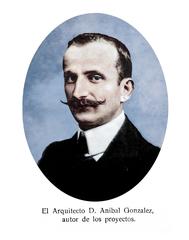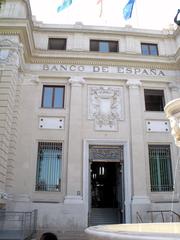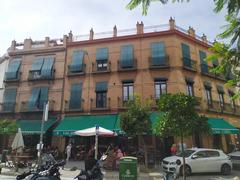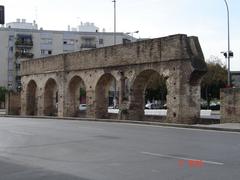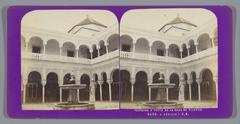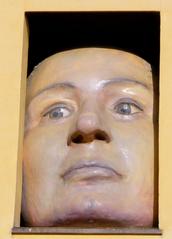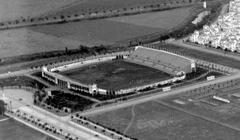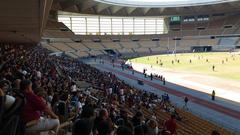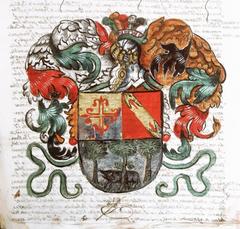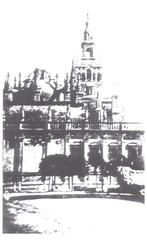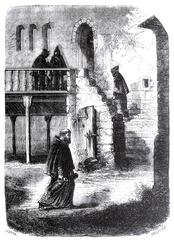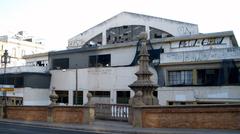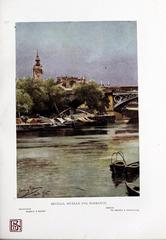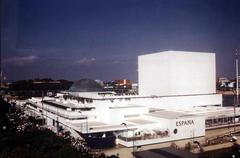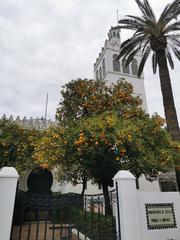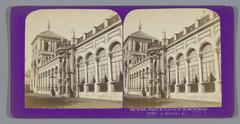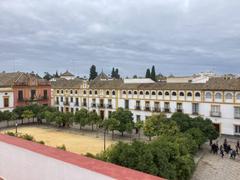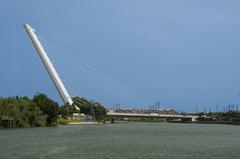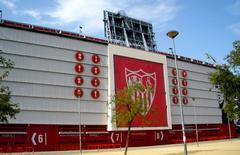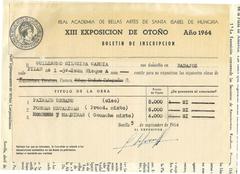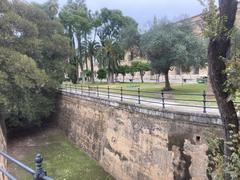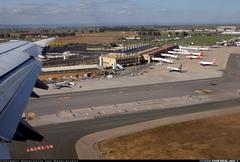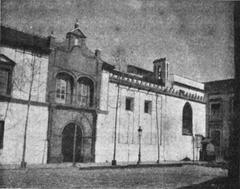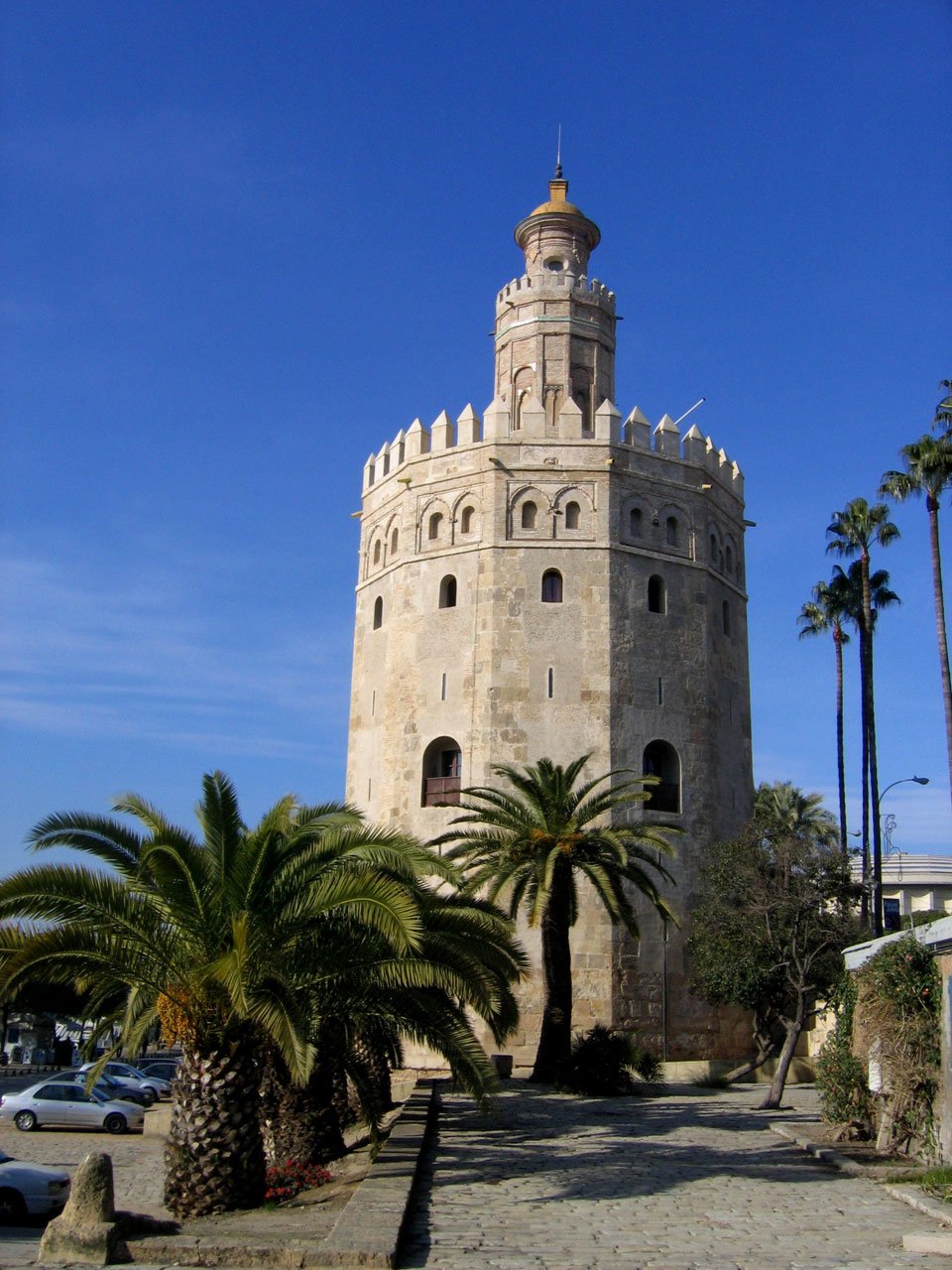
Torre del Oro Seville: Visiting Hours, Tickets, and Historical Significance Guide
Date: 14/06/2025
Introduction
The Torre del Oro (“Tower of Gold”) is one of Seville’s most iconic monuments, standing sentinel over the Guadalquivir River since the early 13th century. Built under the Almohad Caliphate, this dodecagonal military watchtower has witnessed the city’s evolution from a Moorish stronghold to a global maritime power. Today, it houses a maritime museum, offering visitors a window into Seville’s rich naval history, and provides panoramic views of the city. This comprehensive guide covers Torre del Oro’s visiting hours, ticketing, accessibility, the historical context, nearby attractions, and travel tips to help you make the most of your visit. For official details, see Madain Project, Turismo Sevilla, and The Seville Guide.
Table of Contents
- Historical Overview and Architectural Evolution
- Functional Transformations Through the Ages
- Visiting the Torre del Oro: Practical Information
- Architectural Features and Materials
- Preservation and Modern Significance
- Visuals and Media
- Frequently Asked Questions (FAQ)
- Summary Table: Key Architectural Phases
- Call to Action
- References and Further Reading
Historical Overview and Architectural Evolution
Early Origins and Strategic Purpose
Constructed around 1220–1221 CE by the Almohad governor Abù l-Ulà, the Torre del Oro was designed to control river access to Seville, anchoring a massive chain across the Guadalquivir to block enemy ships—most notably during the 1248 Reconquista (Madain Project). Its dodecagonal base reflects Almohad architectural ingenuity, while its riverside position underlined its defensive significance (The Seville Guide).
Architectural Evolution
- Almohad Foundation (13th Century): The original tower, constructed from mortar, lime, and pressed hay, was famed for its golden sheen, which may have inspired its name (The Diary of a Nomad).
- Castilian Additions (14th Century): Following the Christian conquest, a second dodecagonal level was added, enhancing its defensive capabilities (Madain Project).
- Eighteenth-Century Restoration: After the 1755 Lisbon earthquake, Sebastian Van der Borcht restored and expanded the tower with a new circular upper level in 1760, giving it its current profile (Madain Project).
Functional Transformations Through the Ages
Initially a military watchtower, the Torre del Oro later served as a prison for high-ranking captives and as storage for precious goods and documents. In the 20th century, it was preserved as a civic landmark thanks to public advocacy, and since 1944, it has housed Seville’s Maritime Museum, celebrating the city’s seafaring heritage (Turismo Sevilla).
Visiting the Torre del Oro: Practical Information
Visiting Hours and Days of Operation
- Tuesday to Sunday: 9:30 AM – 6:45 PM
- Saturday and Sunday: 10:30 AM – 6:45 PM
- Closed: Mondays, Easter Friday, December 25th, January 1st, January 6th, and for maintenance in August (Visit Seville)
- Best Times to Visit: Early mornings on weekdays are quieter; Mondays offer free entry but are busier (Introducing Seville).
Ticket Prices and Purchase Options
- General Admission: €3
- Discounted Admission: €1.50 for students, pensioners (65+), and children
- Children under 6: Free
- Free Entry: Every Monday for all visitors (Visit Seville)
- Purchase: Tickets are sold only at the entrance—there is no online or advance booking (Visit Seville).
Accessibility
Due to its historical nature, the tower has narrow, winding staircases and no elevator, making upper levels inaccessible for wheelchair users. The ground floor museum is accessible; visitors with mobility concerns should plan accordingly (Spainist).
Guided Tours and Special Events
- Guided Tours: Mostly self-guided, with occasional group or school tours—check at the ticket office for availability.
- Special Events: Temporary exhibitions and cultural events occur periodically; updates are posted at the entrance and on the official website.
- Language Support: Exhibits are in Spanish and English; staff provide basic English assistance.
Travel Tips and Nearby Attractions
- Combine Visits: The tower is within easy walking distance of the Seville Cathedral, Real Alcázar, Maestranza Bullring, and Triana district (Introducing Seville).
- River Cruises: Boat tours depart near the tower, offering unique perspectives of Seville’s riverside (Visit Seville).
- Facilities: Restrooms and a gift shop are available onsite.
- Photography: Permitted throughout, with the rooftop terrace providing excellent panoramic views (Spainist).
Architectural Features and Materials
- Dodecagonal Base: The twelve-sided design provides structural strength and reflects Almohad style (Madain Project).
- Upper Levels: The 14th-century Castilian addition and the 18th-century circular upper level blend medieval and Enlightenment influences.
- Height: Approximately 36 meters tall, the tower offers commanding views across the Guadalquivir and Seville.
Preservation and Modern Significance
- After the 1755 earthquake, citizens’ advocacy led to restoration rather than demolition (Madain Project).
- The 2005 restoration preserved structural integrity and enhanced museum spaces.
- The Torre del Oro remains a vibrant symbol of Seville’s layered history and a focal point for cultural tourism (Turismo Sevilla).
Visuals and Media
High-quality images and virtual tours are available on tourism websites. The rooftop terrace is a highlight for panoramic photos of Seville’s skyline and river (Spainist).
Frequently Asked Questions (FAQ)
Q: What are the Torre del Oro visiting hours?
A: Tuesday to Sunday, 9:30 AM – 6:45 PM; closed on Mondays and select holidays.
Q: How much are tickets?
A: €3 general admission, €1.50 for students, pensioners, and children; free on Mondays.
Q: Can I buy tickets online?
A: No, tickets are only sold on-site.
Q: Is the Torre del Oro accessible for wheelchair users?
A: The ground floor is accessible, but upper levels and the terrace are not.
Q: Are guided tours available?
A: Occasional group tours are offered; most visits are self-guided.
Q: Is photography allowed?
A: Yes, throughout the tower.
Summary Table: Key Architectural Phases
| Phase | Date | Authority/Architect | Key Features |
|---|---|---|---|
| Almohad Foundation | 1220–1221 CE | Abù l-Ulà (Almohad) | Dodecagonal base, lime/mortar/hay materials |
| Castilian Addition | 14th century | Peter of Castile | Second dodecagonal level |
| Restoration/Expansion | 1760 CE | Sebastian Van der Borcht | Circular upper level, post-earthquake repairs |
| Modern Restoration | 2005 CE | — | Structural stabilization, museum adaptation |
Call to Action
Plan your visit to the Torre del Oro and immerse yourself in Seville’s captivating history. Download the Audiala app for guided audio tours, follow us on social media for updates, and explore our related articles to enrich your Seville experience.
For more information, visit Madain Project, Turismo Sevilla, and The Seville Guide.
References and Further Reading
- Torre del Oro in Seville: Visiting Hours, Tickets, History, and Travel Tips, 2025, Madain Project
- Torre del Oro Seville: Visiting Hours, Tickets, and Historical Insights, 2025, The Seville Guide
- Visitor Information and Practical Tips, 2025, Introducing Seville
- Exploring Torre del Oro: Visiting Tips, Nearby Attractions, and Experiences in Seville, 2025, PlanetWare and associated sources
- Seville Traveller - Torre del Oro
- Spainist - Torre del Oro Seville
- Visit Seville - Torre del Oro

